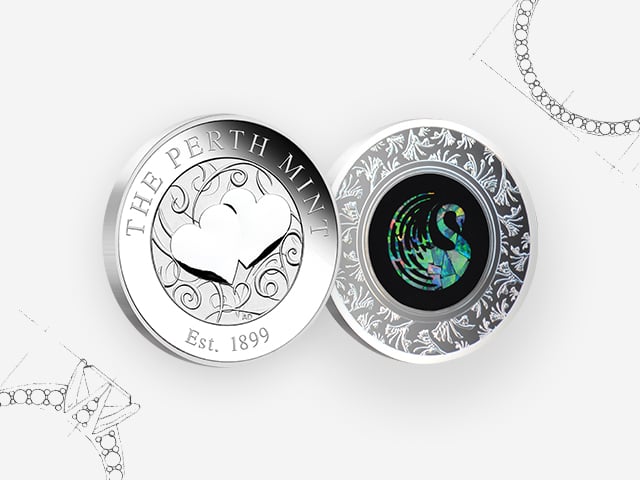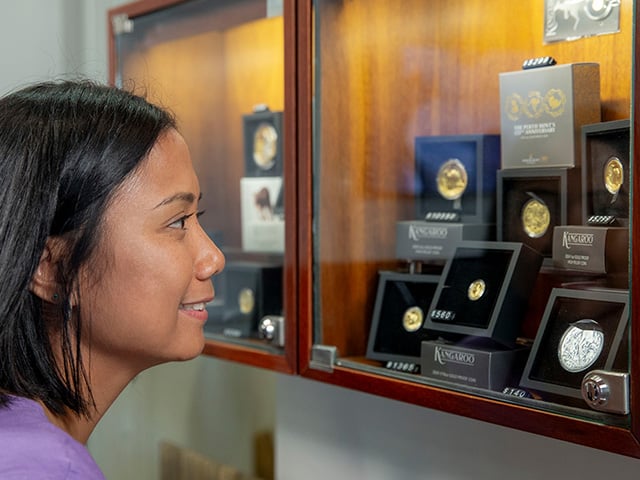Western Australia’s coin minting history and how to identify coins made in Perth
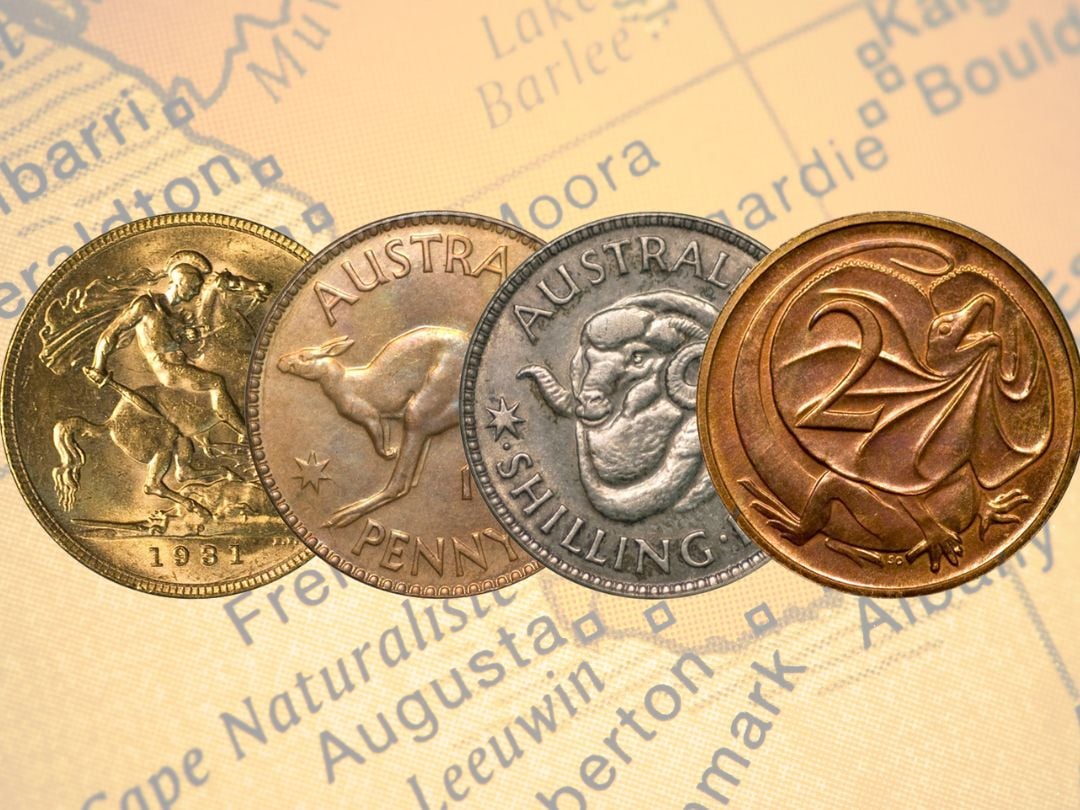
Western Australia has a rich and remarkable history of coin minting. For more than a century, coins have been made in the state's capital, Perth, contributing to Australia’s fascinating currency heritage.
The origins of The Perth Mint lie in Western Australia’s good fortune to be bestowed with exceptional gold reserves. In in 1892, Bayley and Ford’s discovery at Fly Flat (Coolgardie) triggered Australia’s second great gold rush of the 19th century. At nearby Kalgoorlie, the riches of the ‘Golden Mile’ are still being worked today.
Rather than see the raw gold leave Western Australia for processing, Premier Sir John Forrest was determined to realise the economic benefits of establishing a Mint in Perth. The new facility would pay prospectors and mining companies for their finds, then refine the gold before turning it into British sovereigns, important circulating coins of the day.
The go-ahead for the creation of the Perth branch of the Royal Mint was received in 1895. Four years later, on 20 June 1899, The Perth Mint joined the Sydney and Melbourne branches of the Royal Mint in the production of sovereigns bearing the classic ‘St George and dragon’ reverse design.
Setting the standard
The UK Coinage Act 1870 required that coins of the realm be tested for size, weight, and fineness. The new Mint in Perth set aside a quantity of its earliest sovereigns for shipment to London to undergo rigorous testing at the Trial of the Pyx, and ancient ceremonial examination overseen by the Queen’s Remembrancer.
During the test, conducted by a jury of skilled goldsmiths, 180 Perth Mint sovereigns were chosen at random to be measured and assayed. Passing with flying colours, the result was announced by Perth’s first Deputy Master, John Francis Campbell, who declared that the trial was highly satisfactory “both as regards weight, fineness and shows the efficiency and competency of my staff”.
Setting the highest standards by which it would always abide, The Perth Mint went on to produce more than 106 million sovereigns and 735,000 half sovereigns from Western Australian gold before production ceased in 1931. Some of these coins are exceptionally rare and valuable. A complete set of Perth Mint sovereigns, to which many collectors aspire, spans 32 years, four obverse types, and 33 year-dates.
But how do you know if you have a sovereign or half sovereign made in Perth? Thankfully it’s easy as you just look for a ‘P’ mintmark in the coin’s ‘exergue’ (just above the year-date).
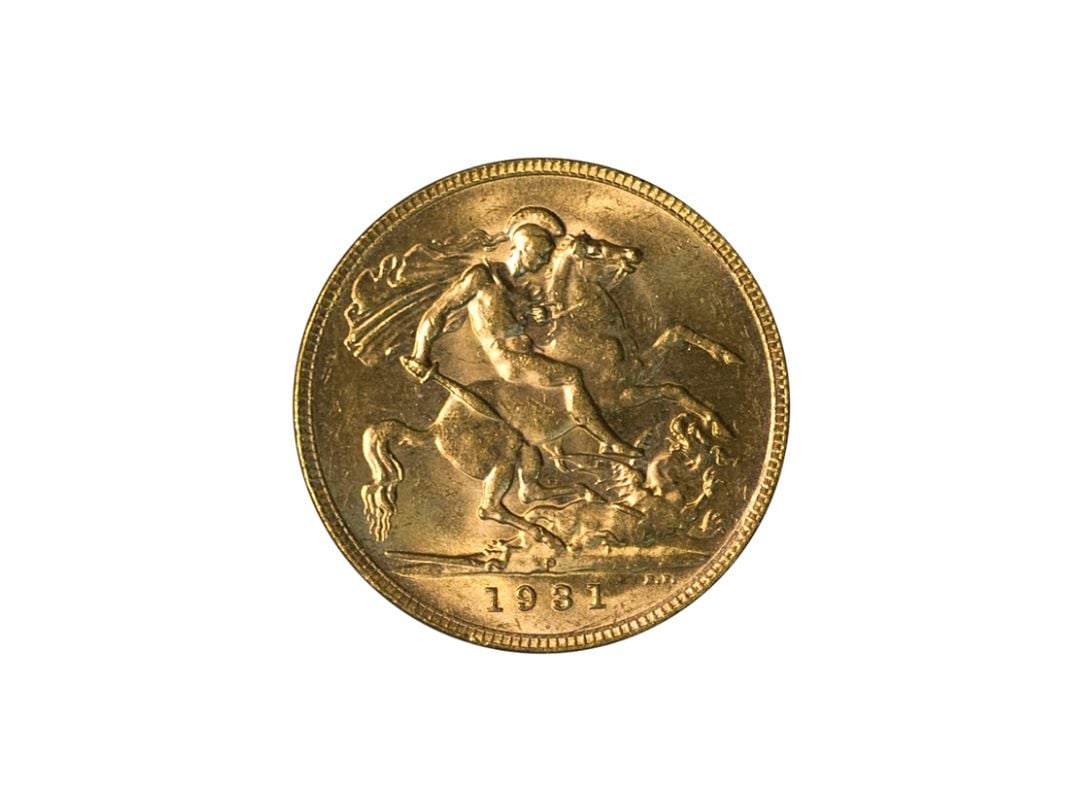
Copper coinage
Following World War I, with Australia’s population booming, heavy demand for coins saw the Commonwealth Government ask The Perth Mint to supply pennies for circulation in the western half of the nation. Large pennies made from copper, which is less malleable than gold, required the modification of two presses, but once again, the minters in Perth rose to the challenge, producing more than three million 1922 King George V pennies.
If you want to know if you have a 1922 penny made in Perth, it is probable that 1920 and 1921-dated pennies were indeed made in Perth, but only 1922 versions can be unequivocally attributed. They were the only pennies made that year with the ‘Indian’ obverse of King George V. More info.
The project was an extremely valuable experience. In 1940 with Australia on a war footing, an urgent telegram arrived from the Treasury in Canberra, asking, “Heavy demand for Australian coin and Melbourne Mint working full capacity. Could you undertake minting copper coin?” Over the ensuing 24 years, output amounted to 438 million pennies and 256 million halfpennies.
Following the traditions of the Royal Mint in London, the Perth branch struck ‘proof’ (presentation) examples. Extremely rare, they are today regarded as unrivalled for quality with superb levels of detail and colour which, experts say, are simply unmatched by those of the Melbourne Mint.
If you have a penny or halfpenny and want to know if it’s made in Perth, look for a dot after the Y in PENNY/HALFPENNY, or a dot after AUSTRALIA. On George VI pennies look for a dot between the initials K and G (Kruger Gray).
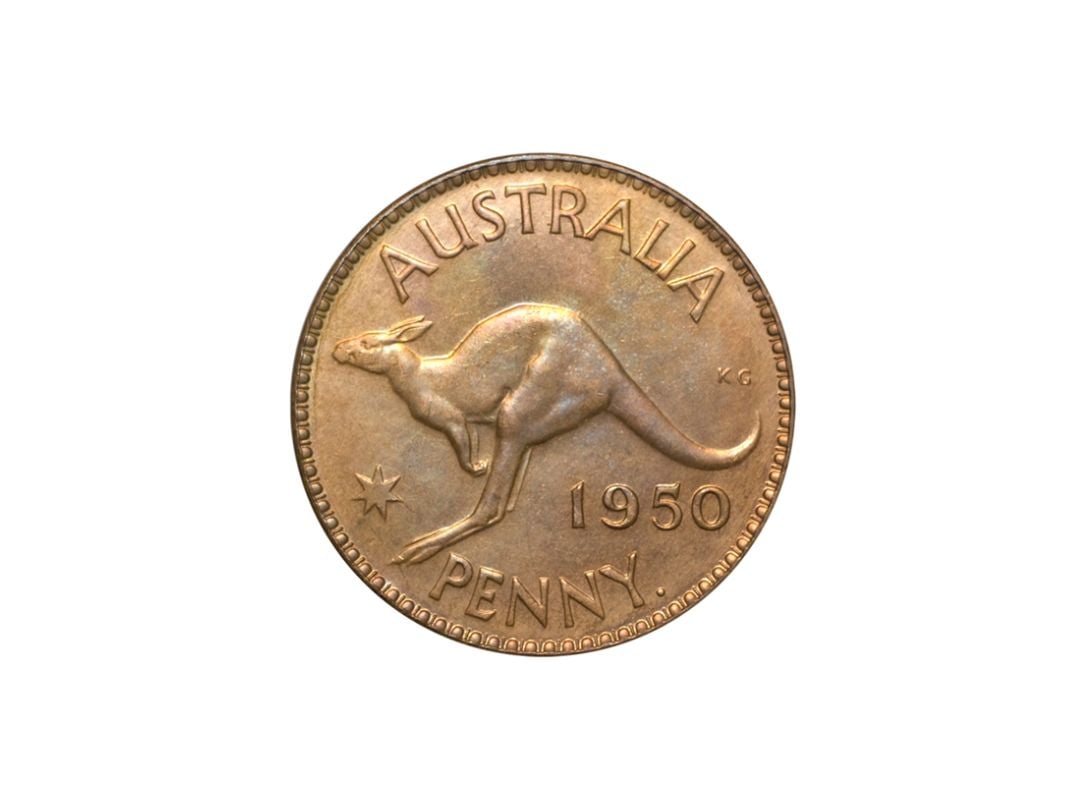 Silver foray
Silver foray
As World War II progressed, the Commonwealth Treasury expressed concern it may become necessary for Perth to produce silver coins too. In the event, The Perth Mint’s foray into silver coinage resulted in a 1946 shilling.
Prior to this date shillings were made from 92.5% silver, which made them worth more than their face value. Perth took on their manufacture in a new alloy comprising 50% silver, 40% copper, zinc and nickel – said to be particularly frustrating to work with as it would not cool properly. Nevertheless, The Perth Mint produced a total of 1,316,000 shillings featuring the beloved ‘ram’s head’ design for George VI.
On the 1946 shilling made in Perth it will have a dot before the S in SHILLING.
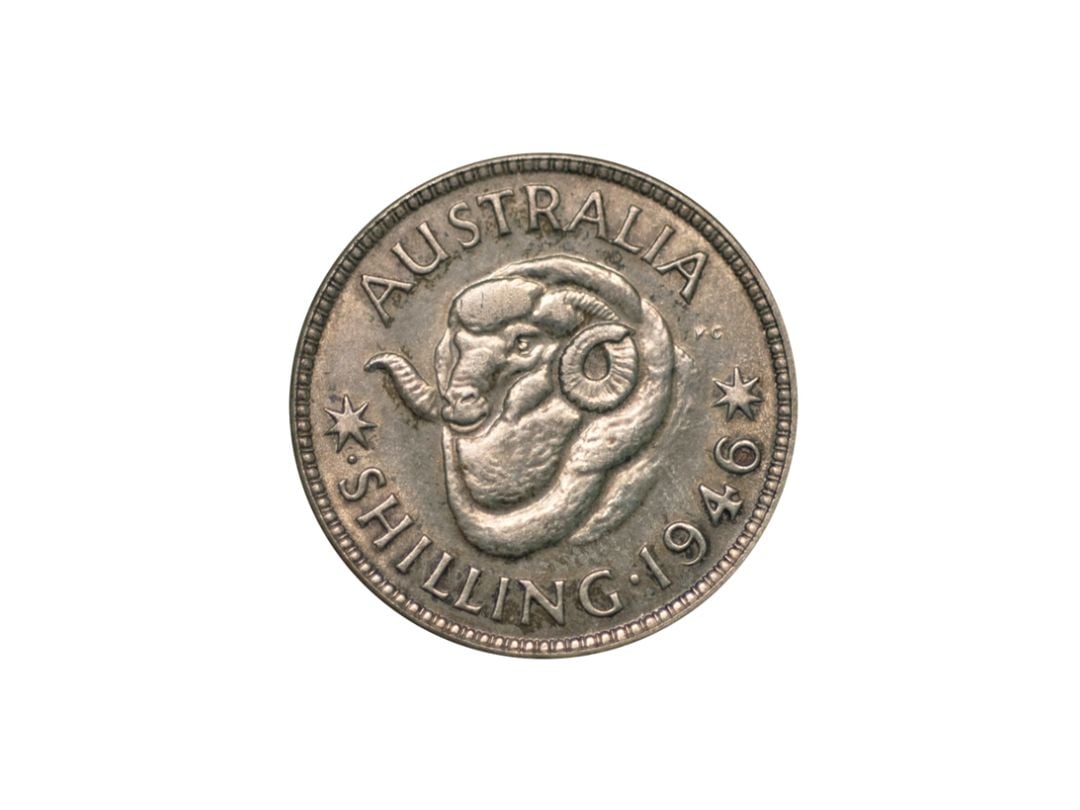 Decimal change
Decimal change
In 1966, four years before responsibility for The Perth Mint was transferred to the Western Australian Government, Australia switched from pounds, shillings and pence to dollars and cents. Once again, the Mint had been asked to help by striking new low denomination decimal coppers in readiness for ‘changeover’ day on 14 February 1966. Even though a new national mint opened in Canberra in 1965, production continued in Perth until 1984, by which time 26 million 1 cent coins and 829 million 2 cent coins had been manufactured.
When it comes to determining whether 1 or 2 cent coins were made in Perth, it really is only possible to determine on the 1966 issues. On these, look for a blunt second whisker on the 1 cent coin’s feather-tailed glider; or look for a blunt first right claw on the 2 cent coin’s frilled-neck lizard.
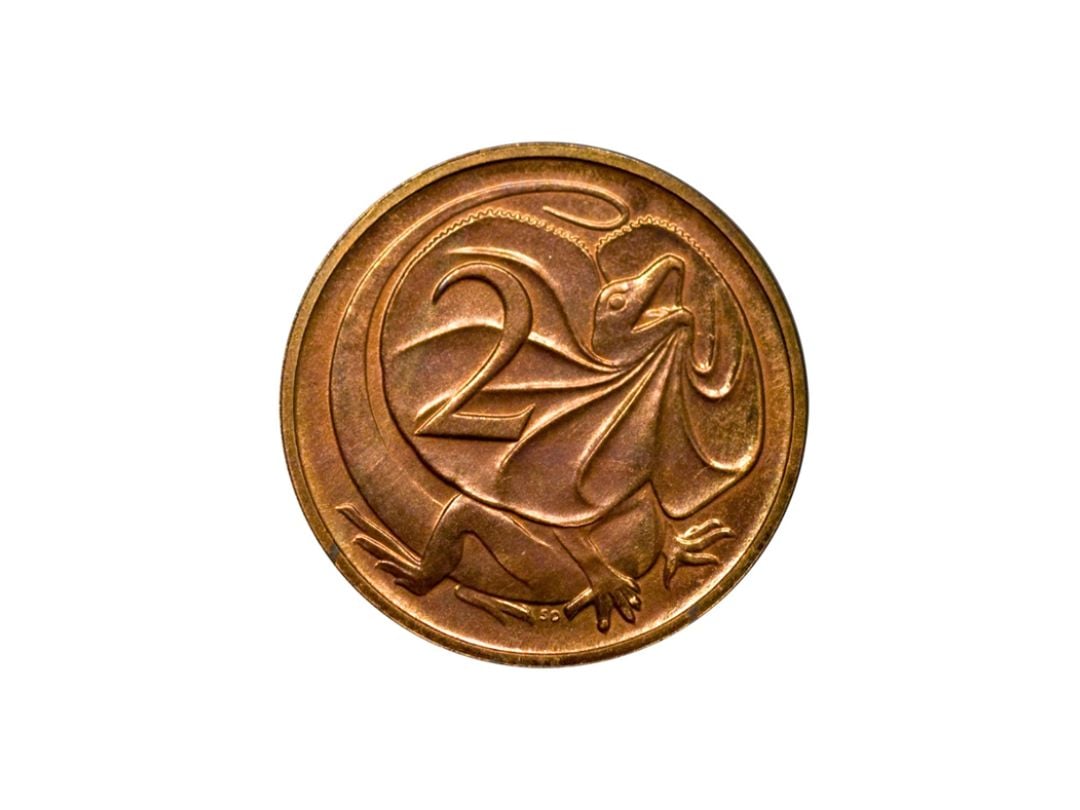 The return to gold and silver
The return to gold and silver
The new decimal pieces portrayed wildlife designs by Geelong-born sculptor, jeweller, and coin designer Stuart Devlin. Described as ‘arguably the greatest living goldsmith’, he accepted an invitation from The Perth Mint in 1985 to develop designs for Australia’s new international gold coin program. His depiction of four of Australia’s most famous gold nugget discoveries appeared on the four coins of the first Proof Issue of the Australian Nugget in 1986. Among other commissions he produced the iconic ‘red kangaroo’, which has appeared on Perth Mint bullion coins since 1990.
Mr Devlin again showcased his extraordinary design skills for the Sydney 2000 Olympic Coin Program, a joint issue from The Perth Mint and the Royal Australian Mint. He considered the Silver Kilo Olympic Masterpiece depicting all 28 sports of the Olympics, to be ‘the pinnacle’ of his coin design achievements.
Modern numismatic pieces
The Perth Mint’s ambitious program of gold and silver collectable products for fans of modern numismatics really took off in the early years of the new millennium. Pushing the boundaries with innovative concepts and meticulous finishes, exploring hundreds of design themes, while always staying true to its pursuit of excellence, has seen it regain former glories as one of the most active and respected precious metal mints on the world stage.
If you’d like to see some of the most incredible coins minted in Western Australia for yourself and discover more golden history, book your visit to our heritage premises and gold exhibition today.









